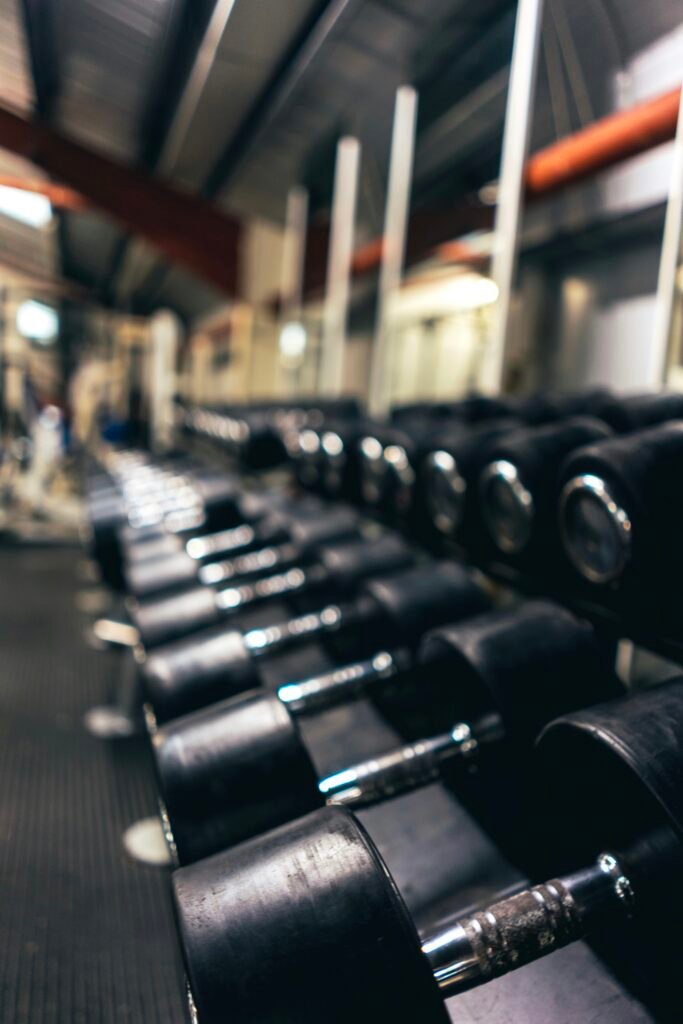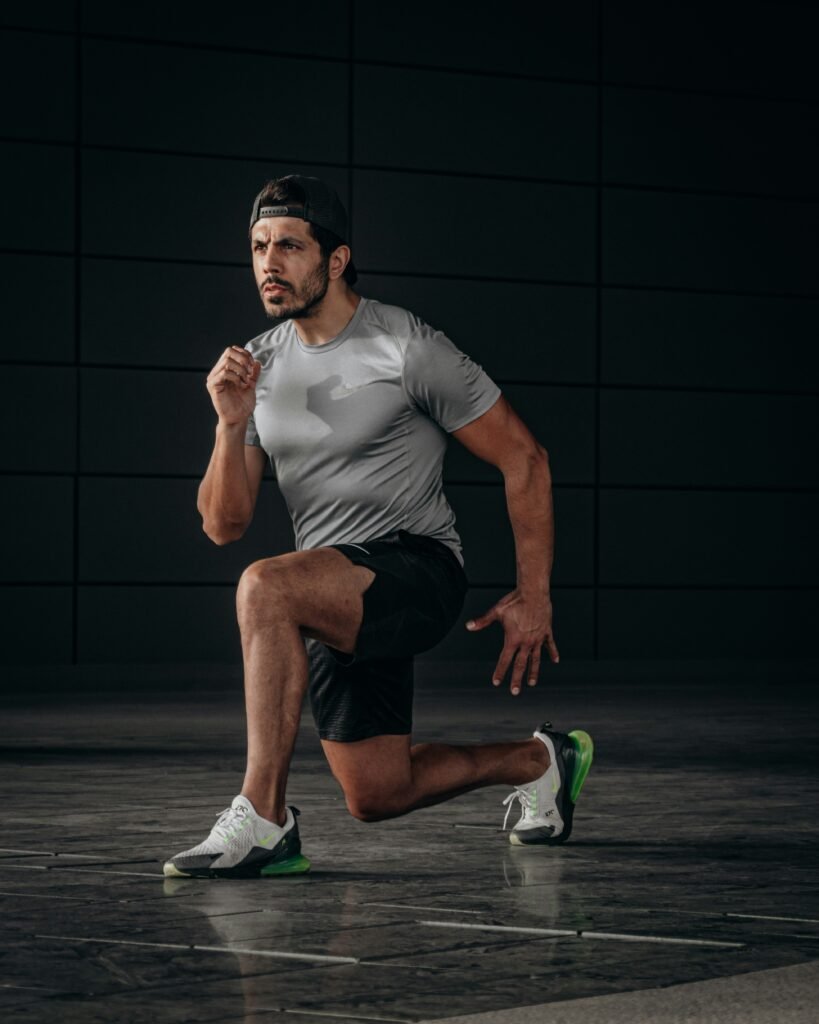
Are you searching for ways to boost your health and fitness from the comfort of your own home? Look no further! This article explores the numerous health advantages of incorporating regular exercise into your routine using home exercise equipment. From increasing cardiovascular endurance to building strength and flexibility, home exercise equipment provides a convenient and effective means of maximizing your overall health and well-being.

This image is property of images.unsplash.com.
Benefits of Regular Exercise
Regular exercise offers numerous benefits for both your physical and mental well-being. By incorporating exercise into your daily routine, you can experience improved cardiovascular health, weight management, stress reduction, increased strength and muscle tone, as well as enhanced flexibility and balance. These benefits can provide a foundation for a healthier and happier lifestyle.
Improved Cardiovascular Health
Engaging in regular exercise helps to strengthen your heart and improve cardiovascular health. Activities such as running on a treadmill, cycling on an exercise bike, or using an elliptical trainer can elevate your heart rate, making it work more efficiently. Over time, this can lower your risk of heart disease, high blood pressure, and other cardiovascular conditions.
Weight Management and Increased Metabolism
If you’re looking to lose or maintain weight, regular exercise is essential. It helps to burn calories and increases your metabolism, assisting in weight management. By incorporating exercises like rowing, using home gyms, or using resistance bands or dumbbells, you can build muscle mass and increase your overall calorie burn throughout the day.
Stress Reduction and Improved Mental Health
Exercise has been proven to be an effective stress reliever and mood booster. When you engage in physical activity, your body releases endorphins, which are chemicals that act as natural painkillers and mood elevators. By incorporating exercis einto your routine, such as yoga on a mat, using exercise balls, or even doing jump roping, you can experience reduced stress levels, improved mental health, and increased overall well-being.
Increased Strength and Muscle Tone
Strength training exercises with home equipment, such as dumbbells or home gyms, can help you build muscle mass and increase overall body strength. Regular strength training can also improve your posture and body mechanics, making everyday tasks easier and reducing your risk of injury.
Enhanced Flexibility and Balance
Maintaining flexibility and balance is crucial for overall mobility and preventing injuries. Incorporating exercises like yoga or using exercise balls can help enhance flexibility and improve balance. These exercises can target specific muscle groups and improve your overall range of motion, making daily activities easier and reducing the risk of falls.
Types of Home Exercise Equipment
When choosing home exercise equipment, it is important to consider your fitness goals, personal preferences, and budget. There are various options available, ranging from cardiovascular equipment like treadmills and exercise bikes to strength training options like dumbbells and home gyms. Here are some popular types of home exercise equipment:
Treadmills
Treadmills provide a convenient way to perform cardio exercises, such as walking or running, without having to leave your home. With adjustable inclines and speed settings, treadmills allow you to customize your workout to match your fitness level and goals.
Exercise Bikes
Exercise bikes are an excellent alternative to outdoor cycling, especially during unfavorable weather conditions. They offer a low-impact cardiovascular workout that is gentle on joints while still providing an effective calorie burn.
Elliptical Trainers
Elliptical trainers simulate the motion of walking or running without the impact on your joints. These machines provide a full-body workout, targeting both the upper and lower body muscles. They are ideal for individuals looking for a low-impact exercise option.
Rowing Machines
Rowing machines provide a complete body workout by engaging multiple muscle groups simultaneously. They offer a low-impact cardiovascular exercise that can help improve endurance and strength. Rowing machines are suitable for individuals of all fitness levels.
Home Gyms
Home gyms are comprehensive exercise systems that offer a wide range of workout options. They typically include various strength training machines and accessories, allowing you to target different muscle groups and perform a full-body workout.
Resistance Bands
Resistance bands are versatile and affordable exercise tools that can be used for strength training. They provide resistance for your muscles to work against, helping to build strength and tone your body. Resistance bands are portable and can be used anywhere, making them a convenient choice for home workouts.
Dumbbells
Dumbbells are a classic piece of fitness equipment that can be used to perform a variety of strength training exercises. They come in different weights, allowing you to gradually increase the resistance as you get stronger. Dumbbells are versatile and can be used for both upper and lower body workouts.
Yoga Mats
Yoga mats provide a comfortable and non-slip surface for practicing yoga or other floor-based exercises at home. They offer cushioning for your joints and help prevent slipping, ensuring a safe and effective workout.
Exercise Balls
Exercise balls, also known as stability balls, can be used for a variety of exercises to improve core stability, balance, and strength. They can be used to target specific muscle groups or as a substitute for a chair to engage your core while sitting.
Jump Ropes
Jump ropes are simple yet effective tools for cardiovascular workouts. They provide an excellent cardio exercise that can be done indoors, offering high-intensity interval training (HIIT) options for a quick and efficient workout.

This image is property of images.unsplash.com.
Factors to Consider Before Purchasing
Before purchasing home exercise equipment, it is important to consider several factors to ensure you make the right choice for your needs. Taking these factors into account will help you make an informed decision and select the equipment that best suits your goals and preferences.
Space Availability
Consider the amount of space you have available in your home for exercise equipment. Measure the dimensions of the room or designated workout area and compare them to the dimensions of the equipment you are considering. Ensure that there is enough space for the equipment to be used comfortably and that it fits within the available area.
Budget
Set a budget for your home exercise equipment purchases. Consider both the initial cost of the equipment and any potential ongoing costs, such as maintenance or replacement parts. Compare prices from different manufacturers or retailers to find the best value for your budget.
Fitness Goals
Identify your fitness goals and determine which types of exercise equipment will help you achieve them. If your goal is to improve cardiovascular fitness, prioritize equipment such as treadmills, exercise bikes, or rowing machines. For strength training goals, consider equipment like dumbbells or home gyms. Having a clear understanding of your goals will help you choose the right equipment.
Personal Preferences
Consider your personal preferences when selecting home exercise equipment. Think about the types of workouts you enjoy or the activities you find most motivating. Choose equipment that aligns with these preferences to increase the likelihood of sticking to your exercise routine.
Safety Features
Ensure that the equipment you are considering has appropriate safety features. Look for equipment with secure grip handles, adjustable resistance levels, and stable constructions. Safety features are essential for preventing accidents or injuries while exercising at home.
Warranty and Customer Support
Check the warranty and customer support options provided by the manufacturer or retailer. A warranty can give you peace of mind in case the equipment malfunctions or requires repairs. Additionally, knowing that there is available customer support to assist you with any questions or concerns can make your exercise experience more enjoyable.
Choosing the Right Equipment for Your Goals
Selecting the right home exercise equipment depends on your specific fitness goals. Different types of equipment cater to different workout objectives. Here are some considerations based on common fitness goals:
Cardiovascular Endurance and Weight Loss
If your primary goal is to improve cardiovascular endurance and facilitate weight loss, equipment like treadmills, exercise bikes, or elliptical trainers are excellent choices. These machines offer various intensity levels, allowing you to engage in high-intensity interval training (HIIT) or steady-state cardio workouts to maximize calorie burn.
Building Strength and Muscle Mass
For individuals looking to build strength and increase muscle mass, equipment like home gyms or dumbbells can be highly effective. Home gyms offer a wide range of strength training exercises, allowing you to target specific muscle groups. Dumbbells, on the other hand, provide versatility and can be used for both isolated and compound exercises.
Improving Flexibility and Balance
If your goal is to improve flexibility and balance, options like yoga mats or exercise balls are beneficial. Yoga mats provide a comfortable surface for practicing yoga poses and stretches, promoting flexibility and balance. Exercise balls can be used for core strengthening exercises that challenge stability and balance.
Low-Impact Exercise Options
For individuals with joint issues or those seeking low-impact exercise options, equipment like elliptical trainers or rowing machines are ideal. These machines provide a full-body workout without putting excessive strain on the joints. Low-impact exercises help to minimize the risk of injuries while still providing effective workouts.
Combination Equipment for Multiple Workouts
If you prefer a variety of workouts and want the flexibility to perform different exercises, consider equipment that allows for multiple workouts. Home gyms are a versatile option, as they often come with attachments and adjustable settings that enable various strength training exercises. Resistance bands are also a portable and versatile choice that can be used for both strength training and stretching routines.

This image is property of images.unsplash.com.
Setting Up Your Home Exercise Space
Designating a suitable area for your home exercise space is crucial to create a conducive environment for workouts. Here are some steps to help you set up your home exercise space:
Designating a Suitable Area
Choose an area in your home that is spacious enough to accommodate your equipment and movements. Ideally, select a room or an area with enough space to walk around and perform exercise routines comfortably.
Ensuring Proper Flooring
Make sure the flooring in your exercise space is suitable for your workouts. If you have hard floors, consider using exercise mats or interlocking foam tiles to provide cushioning and prevent slipping. Carpeted areas may offer enough padding for low-impact exercises but may not be ideal for heavier equipment.
Providing Ample Ventilation
Good ventilation is essential to maintain a comfortable and enjoyable workout environment. Ensure that your exercise space has proper airflow and consider using fans or opening windows during workouts to prevent overheating.
Organizing Equipment for Convenience
Keep your exercise equipment organized and easily accessible. Arrange the equipment in a way that allows for efficient use and minimizes distractions during workouts. Consider investing in storage solutions, such as racks or shelves, to keep your equipment tidy and readily available.
Considering Additional Accessories (Mirrors, TV)
Adding mirrors to your exercise space can be beneficial as they allow you to monitor your form and technique during workouts. A television or music system can also provide entertainment and motivation while exercising. Consider these additional accessories to enhance your workout experience.
Creating a Motivational and Inspiring Atmosphere
Personalize your exercise space to create a motivating and inspiring environment. Hang up motivational quotes or posters and display items that reflect your fitness goals. Adding plants or colorful artwork can also help create a welcoming and energizing atmosphere.
Effective Workout Routines with Home Equipment
Once you have set up your home exercise space and selected the equipment that suits your goals, it’s time to create effective workout routines. Here are some key components to consider when designing your workouts:
Warm-up Exercises
Always start your workouts with a proper warm-up. Engage in dynamic stretches or light cardio movements to increase blood flow, warm up your muscles, and prepare your body for the upcoming workout.
Cardiovascular Workouts
Incorporate cardiovascular exercises into your routine to improve endurance and burn calories. Use your treadmill, exercise bike, elliptical trainer, or rowing machine to perform cardio workouts such as interval training, steady-state cardio, or hill training.
Strength Training Exercises
Include strength training exercises to build muscle and increase overall strength. Utilize dumbbells or home gym machines to target specific muscle groups. Aim for a balanced routine that works all major muscle groups, including exercises for the chest, back, legs, shoulders, and arms.
Flexibility and Stretching Routines
Don’t neglect flexibility and stretching exercises as they help improve mobility, prevent muscle imbalances, and reduce the risk of injury. Incorporate static stretches or yoga poses, making use of your yoga mat, to promote flexibility and relaxation.
Interval Training
Interval training involves alternating between high-intensity exercise and periods of rest or lower intensity. This type of training can boost calorie burn, improve cardiovascular fitness, and enhance overall athletic performance. Use your chosen cardio equipment to perform interval training workouts.
Circuit Training
Circuit training involves performing a series of exercises targeting different muscle groups with minimal rest in between. This type of training helps to improve both cardiovascular fitness and muscular strength. Use a combination of your home gym equipment, dumbbells, resistance bands, or even bodyweight exercises to create a circuit routine.
Safely Using Home Exercise Equipment
To ensure a safe and effective workout experience, follow these guidelines when using home exercise equipment:
Reading and Understanding the Equipment Manual
Before using any equipment, thoroughly read and understand the user manual provided by the manufacturer. Familiarize yourself with the equipment’s functions, safety features, and proper use to reduce the risk of accidents or injuries.
Proper Warm-up and Cool-down
Always warm up your body before starting any exercise routine. Perform light cardio exercises or dynamic stretches to increase blood flow and prepare your muscles for the workout. Similarly, cool down after your workout with light stretches or low-intensity movements to help lower your heart rate and prevent muscle soreness.
Using Correct Form and Technique
Maintain proper form and technique while using home exercise equipment. Incorrect form can lead to injuries or ineffective workouts. If you are unsure of the correct form, consider seeking guidance from a fitness professional or watching instructional videos to ensure you are performing exercises correctly.
Adjusting Resistance and Intensity Levels
Select the appropriate resistance and intensity level for your fitness level and goals. Gradually increase the resistance or intensity as your strength and fitness improve. Push yourself, but avoid overexertion or straining your muscles.
Listening to Your Body and Avoiding Overexertion
Pay attention to your body’s signals and avoid overexertion. If you experience severe pain or feel excessively fatigued, stop exercising and rest. Pushing through pain can lead to injuries and negatively impact your progress. Always listen to your body and adjust your workouts accordingly.
Regular Maintenance and Equipment Check-ups
Regularly maintain and inspect your home exercise equipment. Keep the equipment clean and lubricated as recommended by the manufacturer. Check for any signs of wear or damage and replace any worn-out or malfunctioning parts promptly. Schedule regular check-ups to ensure your equipment is in proper working condition.
Creating a Balanced Exercise Routine
To maximize the benefits of your home exercise equipment, it is important to create a balanced exercise routine that incorporates different types of workouts. Here are some tips for creating a well-rounded routine:
Combining Cardiovascular and Strength Training
Include both cardiovascular exercises and strength training exercises in your routine. By combining these two types of workouts, you can improve overall fitness, burn calories, and build lean muscle mass.
Including Flexibility and Balance Exercises
Don’t forget to incorporate flexibility and balance exercises into your routine. Flexibility exercises, such as stretching or yoga poses, improve range of motion and reduce muscle tightness. Balance exercises, using an exercise ball or yoga poses, help improve stability and reduce the risk of falls.
Setting Realistic Goals and Tracking Progress
Set realistic goals that align with your capabilities and progress gradually. Whether it’s increasing the duration of your cardio workouts or lifting heavier weights, having measurable goals can keep you motivated. Track your progress using a workout journal or smartphone app to see how far you’ve come.
Variety in Workouts to Prevent Boredom
Maintain variety in your workouts to prevent boredom and keep yourself motivated. Mix up your exercises, try new equipment, or explore different workout routines. This variety not only keeps your workouts interesting but also challenges your body in new ways, promoting continuous improvement.
Rest and Recovery Days
Allow your body to rest and recover. Include rest days in your exercise routine to give your muscles time to repair and rebuild. Adequate rest is crucial for preventing overuse injuries and maintaining long-term progress.
Motivating Yourself for Consistent Workouts
Staying motivated for consistent workouts can sometimes be challenging. Here are some tips to help you stay motivated and committed to your fitness routine:
Setting Specific and Achievable Goals
Set specific and achievable goals that are meaningful to you. Break down your long-term goals into smaller, attainable milestones. Having clear goals gives you something to strive for and helps keep you focused and motivated.
Finding an Exercise Buddy or Joining Virtual Communities
Find an exercise buddy who has similar goals or interests. Working out with a partner can provide motivation, accountability, and a sense of camaraderie. If an in-person exercise buddy is not available, consider joining virtual fitness communities or participating in online workout classes for support and motivation.
Creating a Workout Schedule
Establish a consistent workout schedule and treat it as a non-negotiable appointment with yourself. Plan your workouts ahead of time and prioritize them in your daily or weekly routine. By making exercise a regular part of your schedule, it becomes easier to stay consistent.
Rewarding Yourself for Milestones
Celebrate your milestones and accomplishments along the way. Reward yourself with non-food-related treats, such as a new workout outfit, a massage, or a day off. Recognizing and rewarding your hard work can help reinforce positive behavior and motivate you to continue striving for your goals.
Celebrating Progress and Small Achievements
Acknowledge and celebrate even the smallest achievements. Whether it’s completing a challenging workout, hitting a new personal record, or successfully incorporating a new exercise into your routine, take pride in your progress and give yourself credit for your efforts.
Exploring New Exercises and Routines
Keep your workouts fresh and exciting by trying new exercises and routines. Explore different types of equipment or experiment with new workout styles, such as HIIT or Pilates. This exploration allows you to find activities that you enjoy and look forward to, making it easier to stay motivated.
Additional Tips for Maximizing Health Benefits
In addition to regular exercise with home equipment, consider these tips to maximize the health benefits:
Maintaining a Balanced Diet
A balanced diet is essential for supporting your exercise routine and overall health. Fuel your body with a variety of nutrient-dense foods, including fruits, vegetables, lean proteins, whole grains, and healthy fats. Stay hydrated by drinking enough water throughout the day.
Staying Hydrated during Workouts
Drink an adequate amount of water before, during, and after your workouts to stay hydrated. Dehydration can negatively impact your performance and recovery. Keep a water bottle nearby during your workouts and make sure to replenish fluids as needed.
Getting Enough Restful Sleep
Quality sleep plays a vital role in overall health and exercise recovery. Aim for 7-9 hours of uninterrupted sleep each night. Create a bedtime routine, maintain a comfortable sleep environment, and limit exposure to electronic devices before bed to promote restful sleep.
Listening to Your Body and Avoiding Injuries
Pay attention to your body’s signals and avoid pushing through pain or discomfort. Listen to any warnings or signs of overexertion and make any necessary adjustments to your workouts. Prioritizing safety and injury prevention is key to maintaining consistent progress.
Seeking Guidance from Fitness Professionals
If you are new to exercise or unsure of proper techniques, consider seeking guidance from fitness professionals. A personal trainer or fitness instructor can help design a tailored workout plan and teach you the correct form and technique for various exercises, reducing the risk of injuries and ensuring optimal results.
Tracking Progress and Adjusting Routines Accordingly
Regularly track your progress and reassess your routines to ensure ongoing improvement and prevent plateaus. Keep a workout journal or use a fitness app to record your exercises, sets, reps, and any relevant notes. This allows you to identify areas of strength and weakness and make necessary adjustments to your workouts.
By incorporating regular exercise with home equipment into your lifestyle, you can maximize your health and well-being. Remember to choose the equipment that aligns with your goals and preferences, create a safe exercise space, design effective workout routines, and stay motivated for consistent workouts. With dedication and perseverance, you can reap the many benefits of a regular exercise routine.


